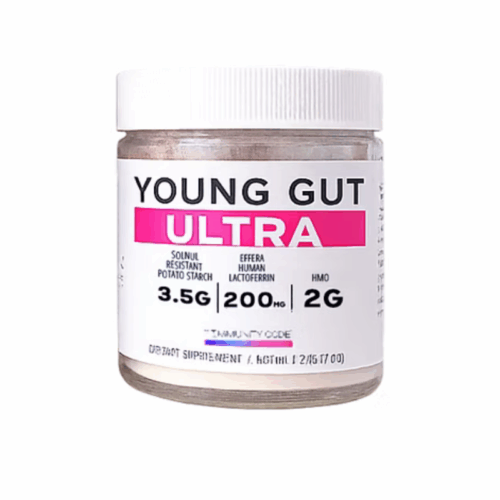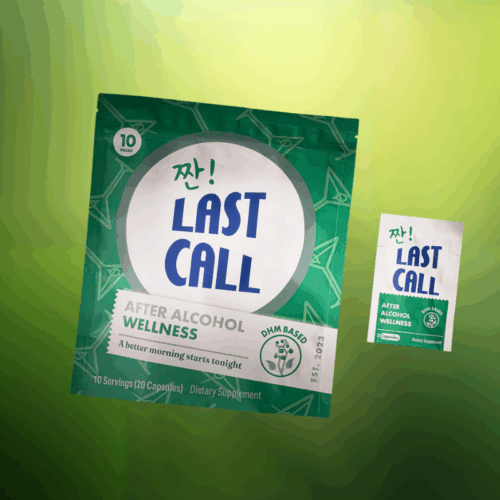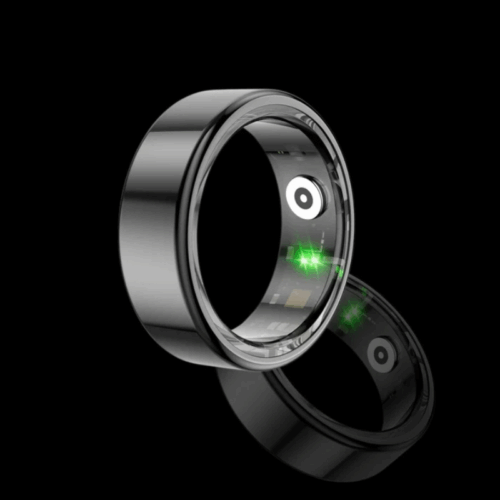Transform your eating habits with the Food Analyzer Smart Nutrition Tracker! This innovative app allows you to scan your meals effortlessly, providing instant insights into calories, macros, and hidden ingredients. Say goodbye to tedious manual logging and hello to smarter choices. Enjoy personalized meal planning and recipe suggestions tailored to your dietary preferences. With your privacy guaranteed, you can trust that your data stays secure. Join a community of satisfied users who have already enhanced their health journeys. Choose Food Analyzer for a convenient, effective way to meet your nutrition goals and eat better every day!
Description
Imagine pointing your phone at a plate of food and instantly seeing not just calories, but a full breakdown of macros, micronutrients, and dietary insights. No manual entry, no guesswork, just real-time feedback. That vision is becoming a reality with modern smart nutrition trackers—AI-powered food analyzers that merge computer vision, big data, and dietetics into a seamless user experience.
In this article, we explore what a smart nutrition tracker (food analyzer) is, how it works behind the scenes, the evidence supporting its accuracy, its benefits, pitfalls, and real-world applications, and what the future holds for this evolving space. Whether you’re a health professional, fitness enthusiast, or curious consumer, this deep dive will equip you with a clear understanding of whether such tools live up to their promise.
What Is a “Food Analyzer / Smart Nutrition Tracker”?
A food analyzer smart nutrition tracker refers to a digital system—typically an app or web platform—that estimates the nutritional content of foods or meals using advanced technologies. Traditional diet apps rely on manual logging: users input food items, serving sizes, and portions. Smart trackers aim to automate this via:
- Image recognition (taking a photo of the meal)
- Natural language input (describing what you ate)
- Barcode scanning (for packaged foods)
From these inputs, the system calculates calories, macronutrients (protein, fat, and carbohydrate), micronutrients (vitamins and minerals), and sometimes additional metrics, such as glycemic load, dietary fiber, and saturated fat. Some platforms also offer personalized recommendations or nutritional guidance tailored to user goals.
Key promises of a smart nutrition tracker include:
- Reducing logging burden and human error
- Faster feedback and insights
- Better adherence to nutrition goals
- More accurate tracking across complex meals
An example of the marketing positioning of such a tool describes it as a “Smart Food Scanner: Instantly see what’s really in your food—no manual logging, see calories, macros, hidden ingredients in seconds.” (From a food analyzer app’s home description.)
The Technology Behind Smart Nutrition Trackers
To understand the reliability of these tools, it's essential to examine how they operate internally. Several AI, sensor, and data science technologies enable them.
1. Computer Vision & Deep Learning for Food Recognition
At the core of image-based food analysis is computer vision—especially convolutional neural networks (CNNs) and object detection models. These systems are trained on large datasets of food images, labeled with food types and, in some cases, portion size or composition.
- A known model architecture is YOLO (You Only Look Once), which performs object detection in a single pass. Some advanced nutrition systems utilize variants like YOLOv8 for rapid detection.
- Once food items in an image are localized and classified, the system attempts to map them to known entries in a food composition database.
- Some systems break down a composite meal (e.g., “rice + chicken + vegetables”) into its separate components, estimate the relative proportions, and sum up the nutrient data accordingly.
A research prototype, NutrifyAI, utilizes a computer vision detection system (e.g., YOLOv8) in conjunction with a nutrition analysis API to estimate nutritional content from images in near real-time. The preliminary accuracy of food recognition in testing reached approximately 80%. (From published AI-nutrition research.)
2. Natural Language Processing (NLP)
When users describe what they ate—“two eggs, spinach, one slice of toast with butter”—the system uses NLP to parse that input, identify food items, serving sizes, and match them to the database. This is helpful when images are unclear or when a quick text input is easier.
3. Food Databases & Composition Tables
Recognition is only part of the battle. The system must also map identified food items to nutrient data. To do this, it relies on:
- Established food composition tables (e.g. USDA, national databases)
- Custom or proprietary databases of packaged foods and local foods
- Recipe databases for cooked or composite dishes
The database must include data on many nutrients beyond calories—such as fiber, sodium, vitamins, and fats—to deliver truly valuable insights.
4. Portion Estimation & Volume Inference
Estimating proportion and volume is a critical challenge. Identifying “chicken breast” is one thing; estimating that it's 150 g vs 300 g is another. Techniques include:
- Depth sensing (if using 3D or dual cameras)
- Reference objects or known plate geometry
- Statistical models trained to infer size from image cues
- User correction (allowing adjustment of portion size)
5. Sensor Fusion & Multimodal Approaches
Beyond just photos or text, some emerging systems combine additional data (wearables, continuous glucose monitors, motion sensors) to refine nutrient estimation. For example, MealMeter is a research system that integrates physiological signals (glucose, heart rate variability) with computer vision to model macronutrient intake more precisely.
This multimodal approach helps correct errors from visual estimation alone and can detect anomalies or mismatches (e.g., if a system “sees” a meal that seems inconsistent with physiological responses).
Evidence: How Accurate Are Smart Nutrition Tools?
A key question: do these smart trackers live up to their promises? The short answer: they are improving rapidly, but accuracy and reliability are still variable.
Research and Prototype Systems
- In the MealMeter study, combining sensors and vision, the system achieved mean absolute errors (MAE) in glycemic carbohydrate estimation as low as ~13 g, with relatively low relative errors in macronutrient estimation. This suggests that sensor fusion can meaningfully improve performance.
- In NutrifyAI, image-based recognition achieved an accuracy of approximately 80% in classifying food items. The study emphasizes that while recognition is promising, portion and composition estimation still limit perfect accuracy.
- Earlier work (e.g., FoodAI) developed deep learning models to classify among 700+ food classes, demonstrating that food recognition on a large scale is feasible with well-curated datasets.
Commercial Tools & Consumer Claims
Commercial smart nutrition tools often advertise high accuracy (some claim 99% accuracy in macros) or instantaneous results. However, real-world tests suggest caution:
- Accuracy varies by food type: packaged foods, simple dishes, or single-ingredient items are easier; complex mixed dishes (stews, casseroles) are much harder.
- Portion estimation errors continue to be a significant source of error.
- Lighting, occlusion, plating style, and image quality can introduce misclassification errors.
- Users sometimes override or correct the estimates, which helps, but reduces the effectiveness of true automation.
Overall, smart nutrition trackers should be viewed as more reliable than pure guesswork but not yet perfect replacements for weighed food logs in research settings.
Benefits & Use Cases
When deployed well, smart nutrition trackers offer several advantages across different user groups.
For Consumers & Health Enthusiasts
- Faster, less tedious logging: Taking a photo is faster than typing every ingredient and portion.
- Better adherence: Reducing friction increases consistency in tracking.
- Immediate feedback: Seeing nutrient breakdowns while eating can guide better choices.
- Discovering hidden “surprises”: Many processed or restaurant foods contain unexpected levels of sodium, fat, or sugar; instant insights can raise awareness.
For Dietitians & Nutritionists
- Patient monitoring: Clients can share tracked meals easily without manual diary transcription.
- Better engagement: Clients may be more willing to log in if the process is easier.
- Data-driven counseling: Trends over time, micro-nutrient gaps, and variation patterns become clearer.
For Research & Public Health
- Large-scale data collection: With sufficient users, anonymized logs can reveal population-level dietary patterns.
- Intervention tracking: Programs can monitor compliance more objectively.
- Nutritional epidemiology: Real-world diet logs enable new research, although care is needed to ensure data quality.
For Specialty Use Cases
- Diabetes / Glycemic control: Integration with continuous glucose monitors may enable dynamic feedback loops.
- Athletic / Performance nutrition: Precise macro tracking supports tailoring fueling strategies.
- Weight management & behavioral interventions: Real-time accountability can support more adaptive coaching.
Challenges and Limitations
Smart nutrition trackers are not without obstacles. Understanding their limitations is essential for realistic expectations.
1. Portion Estimation Errors
Even a perfect food classifier is worthless if volume estimates are off. A mis-estimate by ±20–30% in portion size is common, multiplying the error in nutrient output.
2. Mixed / Composite Dishes
Complex meals (e.g. lasagna, curry) contain multiple ingredients, sauces, and hidden fats or sugars. Decomposing them accurately from an image is extremely challenging.
3. Database Gaps & Localization
Many food databases are region-specific and lack local dishes, brands, or ingredients, which limits their accuracy in many parts of the world. When users eat local or homemade meals not in the database, the tracker must approximate or guess, which introduces error.
4. User Overrides / Corrections
To maintain usability, many apps allow users to adjust portion or correct misclassifications. While this improves final accuracy, it reduces the automation and “hands-free” promise.
5. Data Privacy & Ethical Use
Meal images and nutrition logs are sensitive personal data. Ethical considerations include:
- Storage and encryption of images
- Consent and anonymization
- Use of data for research or commercial purposes
- Bias and fairness (e.g., systems trained mostly on certain food cultures)
6. Behavioral and Psychological Factors
- Overreliance: Users may trust the tracker blindly, even when it’s inaccurate.
- Disordered patterns: Some individuals may become obsessed with tracking, exacerbating anxiety or disordered eating.
- Feedback overload: Too many metrics or “nutrition scores” can overwhelm and demotivate.
Best Practices for Using Smart Nutrition Trackers
To harness the benefits while minimizing risks, consider the following strategies:
- Use as a guide, not a gospel
Treat estimates as reasonable approximations, not absolute truths. - Correct obvious mistakes
If the system misidentifies a food or wildly misestimates a portion, override it. - Weigh key foods periodically
Occasionally, calibrate by weighing portions and comparing. - Understand context
Use them primarily for simple meals; take special care with complex or mixed dishes. - Protect your data
Choose platforms that emphasize privacy, encryption, and user control. - Set healthy boundaries
Use the tool as a support—not as a strict gatekeeper—so it doesn’t trigger anxiety or obsessive tracking. - Combine with professional guidance
For clinical conditions, share logs with a dietitian rather than relying solely on automated interpretations.
What the Future Holds: Trends & Innovations
The field of smart nutrition tracking is rapidly evolving. Some emerging directions and open frontiers include:
Multimodal Sensing & Biosignals
Integrating wearables (heart rate, motion sensors), continuous glucose monitors, or even gas sensors can refine nutrient estimations by correlating physiological responses with observed food intake. Systems like MealMeter already explore this direction.
Contextual AI & Personalization
Future systems will adapt to individual eating patterns, food preferences, and ethnic cuisines. They may learn your common dishes and improve recognition accuracy over time.
Real-Time Coaching & Feedback Loops
Imagine a system that doesn’t just log, but nudges you: “Your protein is low for this meal—consider adding beans,” or “You’ve consumed 70% of daily sodium—be cautious of added salt tonight.” Coupled with AI insights, they provide personalized guidance on the fly.
Augmented Reality (AR) Visualization
Smart glasses or AR displays might overlay nutritional information on actual plates in real-time—showing macro breakdowns superimposed on your food before you eat it.
Integration with Health Systems
For clinical populations (e.g., diabetes, chronic disease), trackers may feed directly into electronic health records, supporting remote monitoring and personalized interventions.
Better Global Food Coverage & Localization
Expanding food databases to capture local cuisine, brands, and recipes worldwide will reduce approximation errors and enhance relevance for a diverse range of users.
Summary & Takeaways
- Smart nutrition trackers (food analyzers) offer automated nutrition estimation using AI, image recognition, and food composition databases, reducing manual logging effort.
- The underlying technologies—computer vision, NLP, and sensor fusion—are mature but still evolving in their application to food tracking.
- Accuracy is promising but imperfect. Portion estimation, composite dishes, and database coverage remain core challenges.
- When used thoughtfully, these systems benefit consumers, dietitians, and researchers by improving adherence, engagement, and data richness.
- Ethical, psychological, and privacy considerations must be addressed to ensure the responsible adoption of this technology.
- The future holds deeper integration, real-time coaching, multimodal data fusion, and personalized nutrition pathways.



